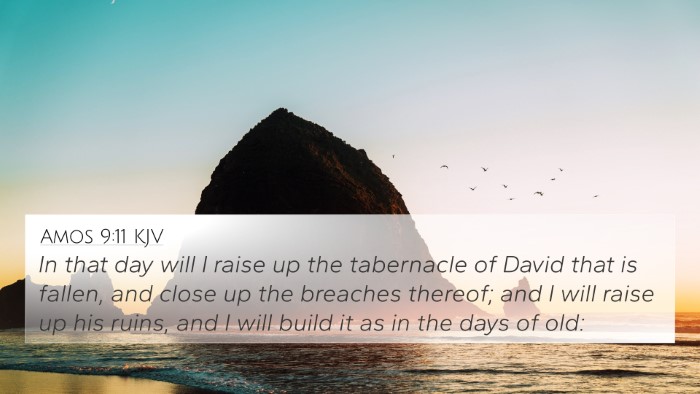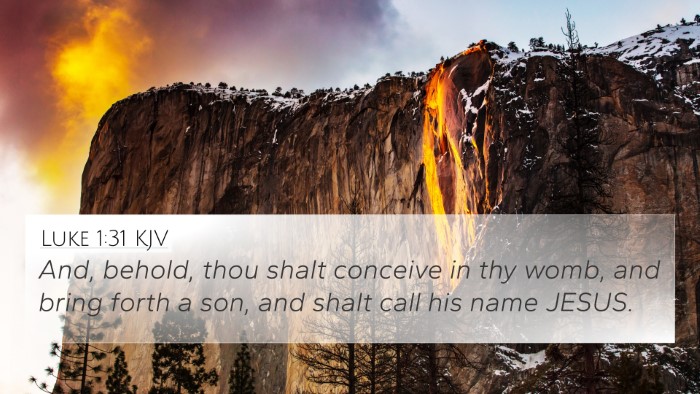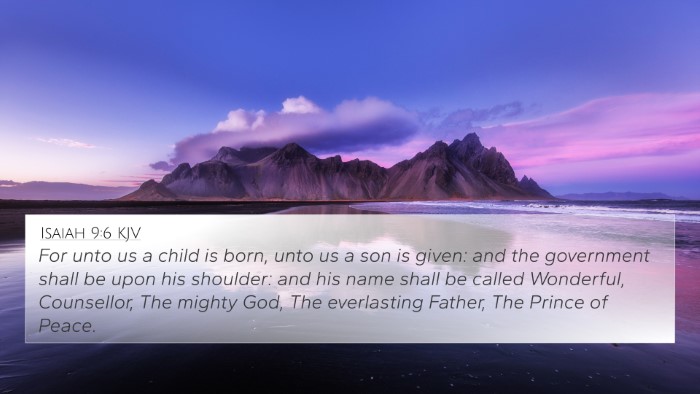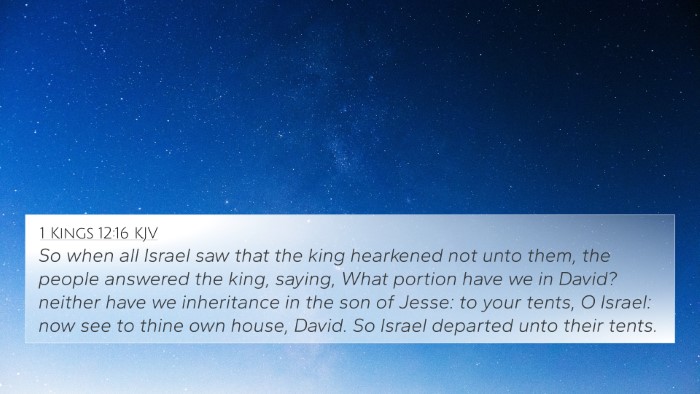Understanding Acts 15:16
Acts 15:16 states: "After this I will return, and will build again the tabernacle of David, which is fallen down; and I will build again the ruins thereof, and I will set it up." This verse is significant in its implications for both the early church and the prophetic fulfillment of God's promises regarding Israel.
Summary of Meaning
The context of Acts 15 involves the Council of Jerusalem, where early church leaders convened to address the inclusion of Gentiles into what had been a predominantly Jewish faith. The quotation from Acts 15:16 emphasizes God's intention to restore His relationship with His people, represented metaphorically by the "tabernacle of David." Here, we explore the connections through various public domain commentaries.
Insights from Commentaries
- Matthew Henry: Henry highlights the restoration of the tabernacle as a symbol of God’s mercy and grace in the New Covenant. He notes that this restoration points to the revival of true worship and the gathering of God's faithful servants.
- Albert Barnes: Barnes expounds on the "tabernacle of David," interpreting it as a representation of the Davidic kingdom, which anticipated the more expansive kingdom of Christ. He draws parallels between the physical rebuilding of the tabernacle and the spiritual restoration of God’s people through Jesus.
- Adam Clarke: Clarke connects this verse to the theme of renewal and restoration. He discusses how this rebuilding signifies a divine initiative to re-establish a dwelling place for God among His people, ultimately fulfilled in the church.
Cross-References for Acts 15:16
To understand Acts 15:16 fully, it is beneficial to explore cross-references that highlight themes of restoration and God's promise. Here are several pertinent verses:
- Amos 9:11-12: This Old Testament passage prophesizes the restoration of the fallen tent of David, directly correlating with the quoted verse in Acts.
- Isaiah 61:4: Expands on the theme of rebuilding the ancient ruins and restoring the places long devastated.
- Jeremiah 30:18: Discusses the restoration of cities and their inhabitants, reflecting God's promise to His people.
- Ephesians 2:19-22: Illustrates how Gentiles are now part of the household of God, a spiritual building, which aligns with the rebuilding in Acts.
- Luke 1:32-33: The angel’s proclamation to Mary about Jesus' eternal kingship resonates with the Davidic restoration motif.
- Romans 11:25-26: Discusses the salvation of all Israel, linking the New Testament promise back to the Old Testament expectations.
- Hebrews 8:10: Reflects God's promise to establish a new covenant, which includes a restoration aspect.
Thematic Connections
This verse can also be examined through a thematic lens, considering how it fits into the grand narrative of Scripture:
- Restoration: Acts 15:16 embodies God’s assurance to restore His people, echoing the themes found throughout the prophetic books.
- Inclusion: The move to include Gentiles speaks to the expansion of God’s covenant promise beyond Israel.
- Worship: The rebuilding of the tabernacle signifies a return to true worship facilitated by Christ’s redemptive work.
Inter-Biblical Dialogue
There is a vital dialogue between the Old and New Testaments in understanding this verse. By employing tools for Bible cross-referencing, we can uncover deeper meanings and applications:
Utilizing resources like a Bible concordance allows believers to see how themes of restoration, worship, and inclusion echo throughout Scripture. For example, the Bible cross-reference guide can help identify related narratives that speak to God’s ongoing work in history and the lives of believers.
Comparative Analysis
Through a comparative Bible verse analysis, one can see the links between prophetic books and the apostolic teachings in the New Testament. These connections serve to reinforce the unity of the Biblical narrative and God's unfolding plan.
Conclusion
Acts 15:16 is a profound declaration of God's promise to restore and gather His people. By engaging with public domain commentaries and utilizing tools for Bible cross-referencing, readers can deepen their understanding of this significant verse. The integration of these insights encourages believers to appreciate the continuity of God's message from the Old Testament through the New Testament, fostering a richer faith experience.
In summary, engaging deeply with Scripture, employing cross-referencing Bible study methods, and recognizing the interconnectedness of the biblical text enrich our understanding of passages like Acts 15:16.














